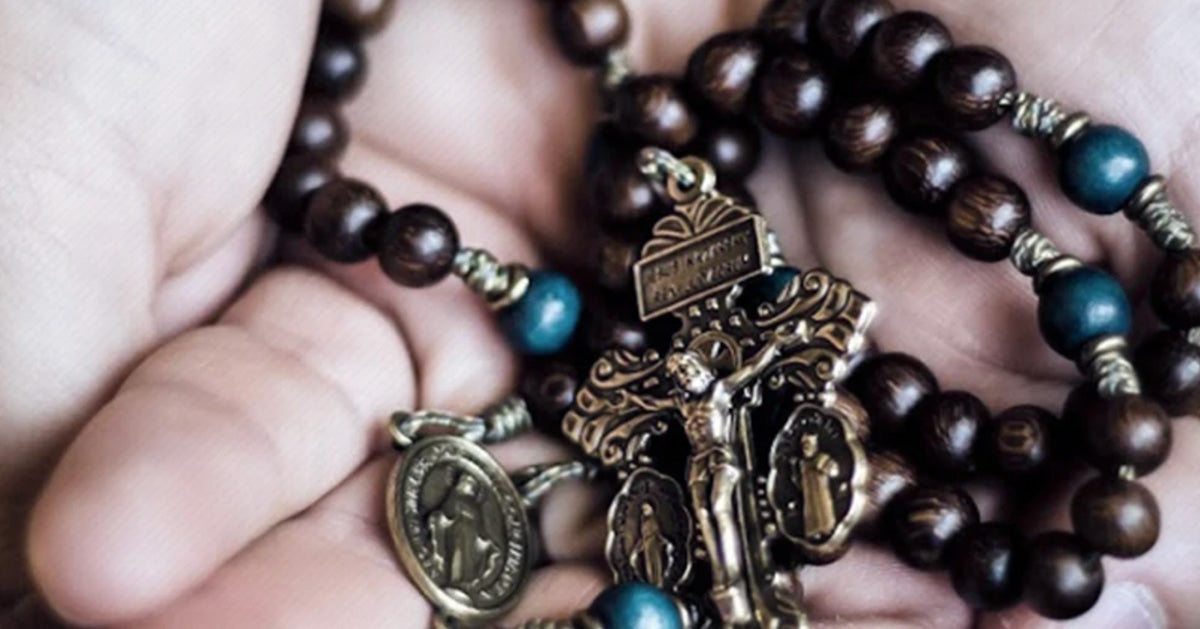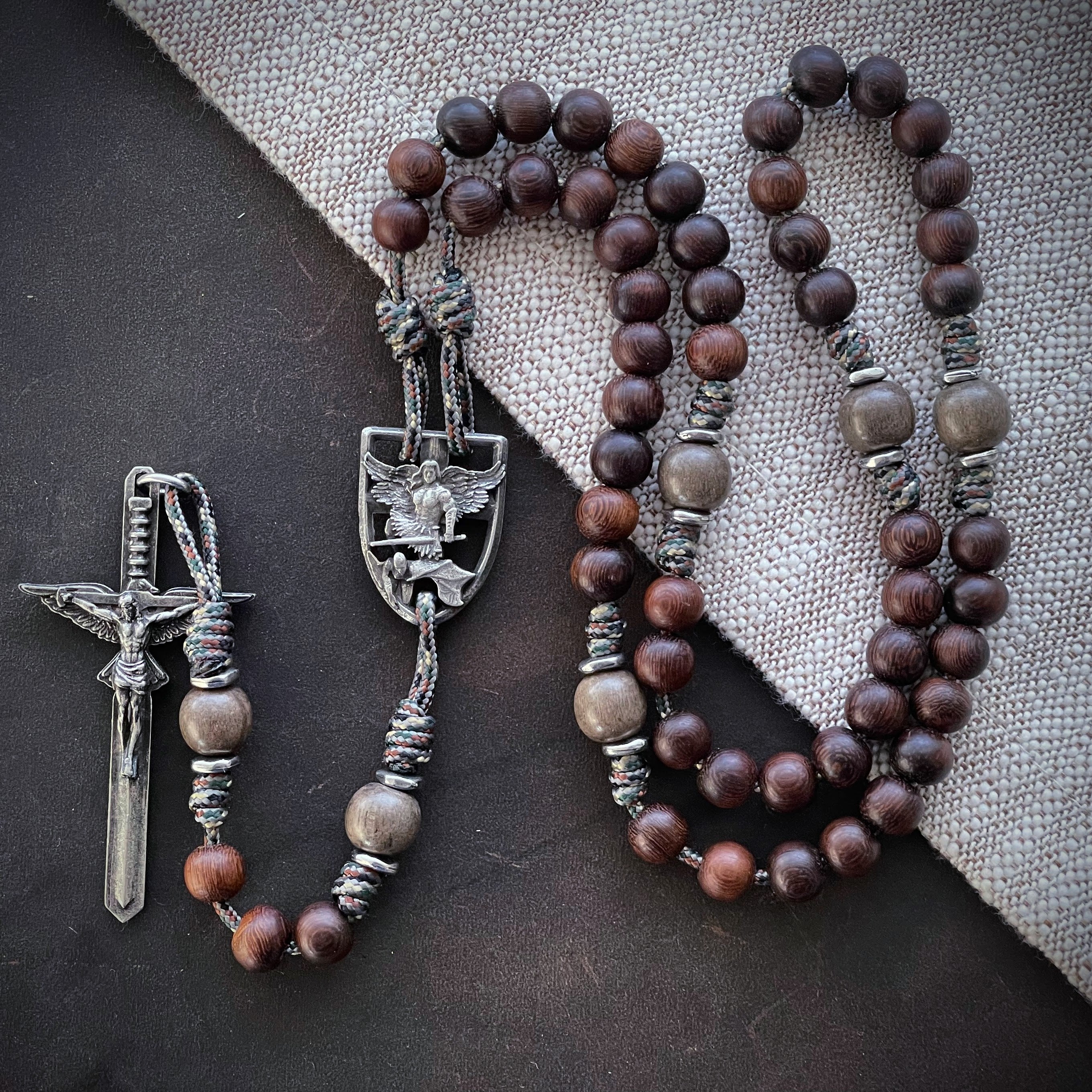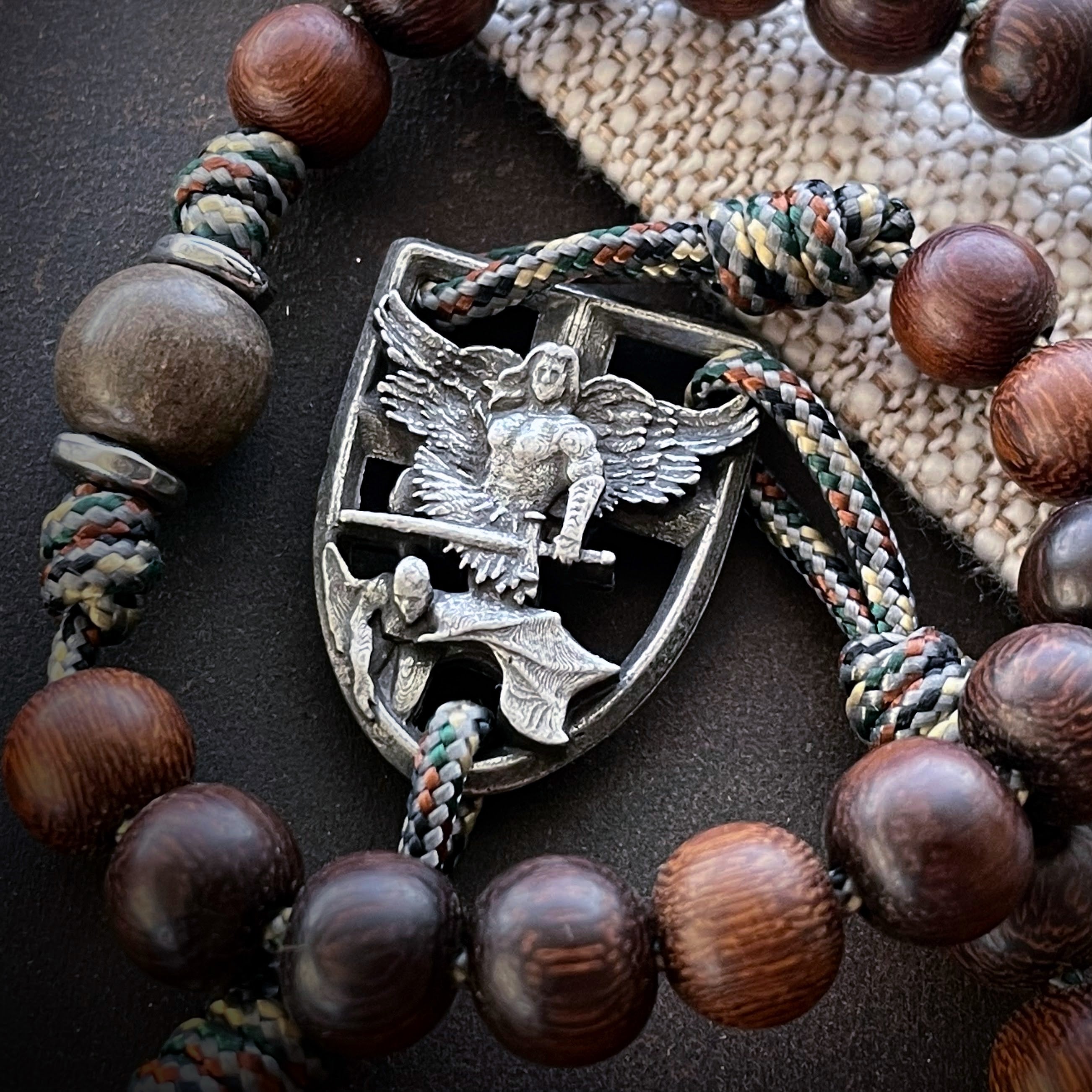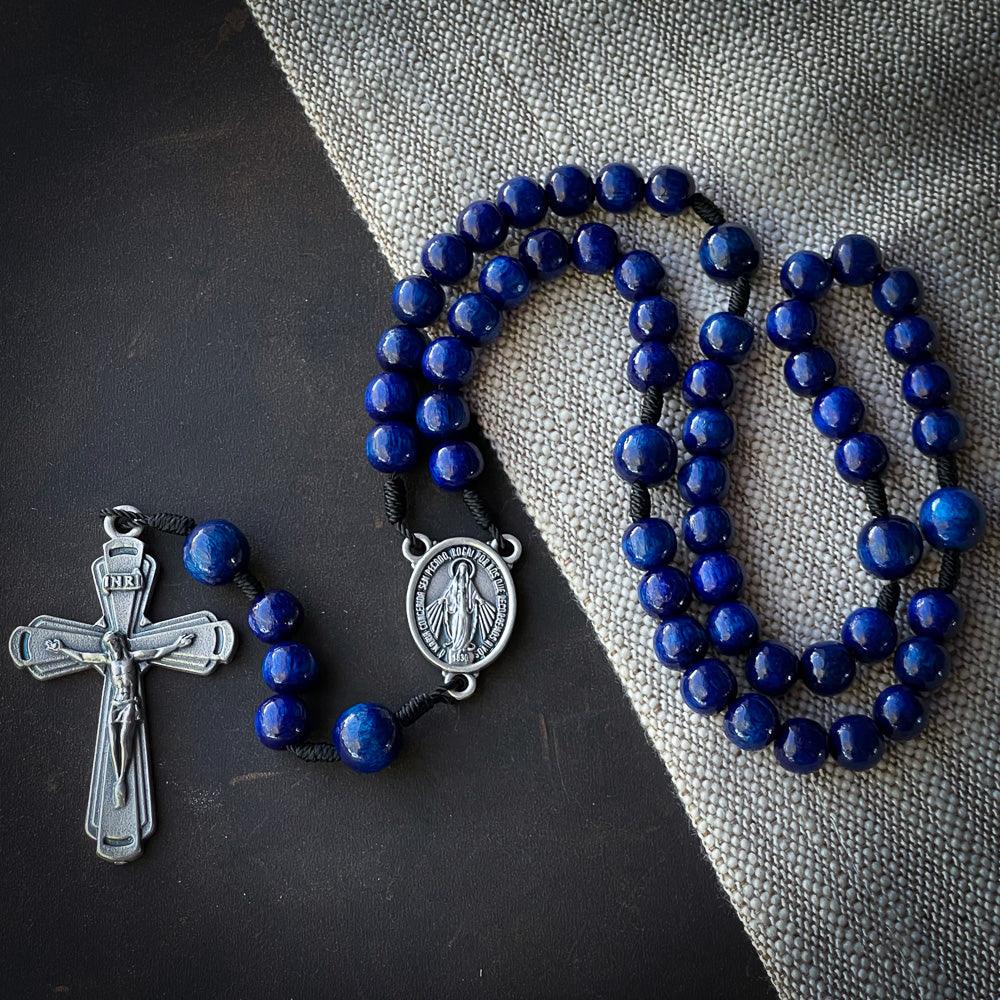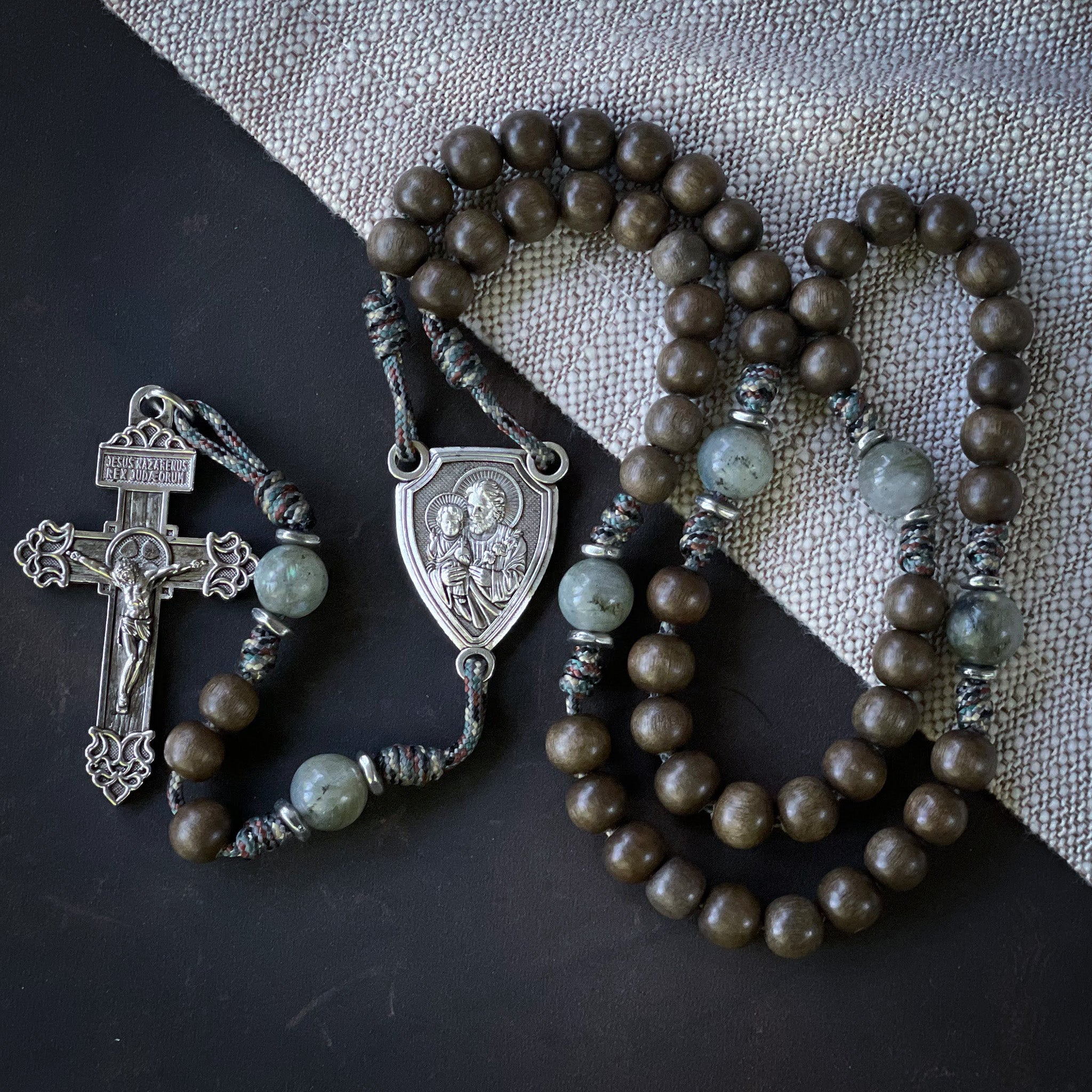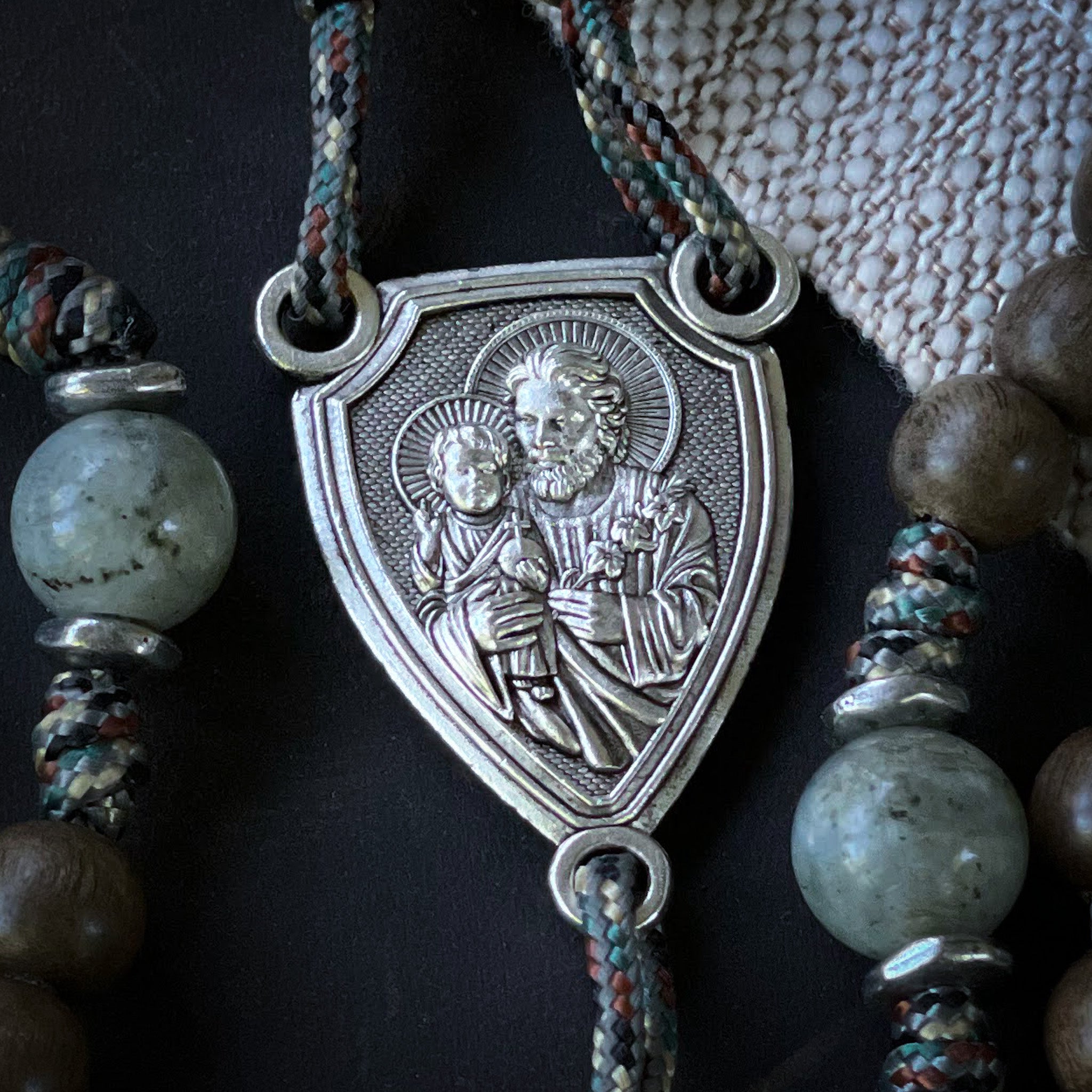
A while back, we published a blog post about crucifix basics—what they are, why they’re important, and how you use them. Today, we’re drilling down on two of the most common variations that appear in our Catholic Woodworker lineup—the St. Benedict Crucifix and the Pardon Crucifix.
If you shop our store, you’ll see these styles offered with our rosaries and home altars, or sometimes on their own. You might look at them and say: “Now, wait a minute—those are unusual. They don’t look like other crucifixes. Why’s that? What’s special about them?”
If that’s you, then we’re glad you asked! Both the St. Benedict and the Pardon Crucifix have a venerable history. Aside from representing Our Lord’s saving death, they fulfill their own unique purposes—which might be just what your soul needs right now.
The St. Benedict Crucifix

What distinguishes this style is the circular medal set into the center of the cross, behind Jesus’ head. It’s the St. Benedict Medal, one side of which depicts the sainted monastic founder surrounded by his traditional symbols—a book, a cross, a raven, and a chalice. There’s also a Latin phrase, Crux S. Patris Benedicti (“The Cross of Our Holy Father Benedict”), and a Latin prayer around the edge, Eius in obitu nostro praesentia muniamur (“May we be strengthened by his [St. Benedict’s] presence in the hour of our death”).
The other side features a cross and several sets of initials, each of which signifies a Latin phrase. In the four quadrants created by the cross, you’ll see: CSPB (“The Cross of Our Holy Father Benedict”). On the cross itself, you’ll find: CSSML NDSMD (“May the Holy Cross be my light! May the dragon never be my guide!”). Finally, along the circumference it reads: VRSNSMV SMQLIVB (“Begone Satan! Never tempt me with your vanities. What you offer me is evil. Drink your own poison!”), along with the ancient motto of the Benedictine order, PAX, or “peace.”
Why It Might Be For You
When blessed, St. Benedict Medals are sacramental objects that traditionally protect those wearing or carrying them from demonic forces. The initials around the cross, and the prayers associated with them, constitute a minor exorcism. In fact, it’s the only saint medal that has an exorcism as part of its design. Thus you might choose the St. Benedict Crucifix if you feel particularly harassed by evil, or if you are acutely conscious of spiritual warfare.
Here, we must stress that Catholics do not believe in sacramentals as “magic” or “charmed” objects. However, they do convey grace, particularly if blessed by a priest. And that grace bears a relationship to what the medal represents—in this case, a prayer to God against the devil and all his empty promises.
St. Benedict Medals are also a traditional “logo” for the Benedictine order and the monastic spirituality associated with it. So, the St. Benedict Crucifix might be an especially appropriate choice if you are a Benedictine oblate, or if you feel called to the “prayer and work” lifestyle associated with the Rule of St. Benedict.
The Pardon Crucifix
 Like the St. Benedict Crucifix, this one has extra “parts” that you don’t notice on other crucifixes. One is the full inscription above Jesus’ head—not just INRI, but Iesus Nazarenus Rex Iudaeorum (“Jesus of Nazareth, King of the Jews”).
Like the St. Benedict Crucifix, this one has extra “parts” that you don’t notice on other crucifixes. One is the full inscription above Jesus’ head—not just INRI, but Iesus Nazarenus Rex Iudaeorum (“Jesus of Nazareth, King of the Jews”).
On the back, you’ll find an image of the Sacred Heart and two inscribed phrases, namely “Father, forgive them” (as Jesus uttered from the Cross) and “Behold this Heart which has so loved men” (spoken by Jesus to St. Margaret Mary Alacoque, who propagated the Sacred Heart devotion).
At the foot of the cross, you’ll also notice the traditional monogram for Mary, or AM (“Ave Maria”). Some Pardon Crucifixes, though not all, will come with a medal affixed under each arm—a St. Benedict Medal and a Miraculous Medal.
The Pardon Crucifix is heavily indulgenced, as per the decree of Pope St. Pius X in 1905. Under certain conditions, this indulgence is plenary—that is, it remits all temporal punishment for sin—and can be applied to the Holy Souls in Purgatory, not just you.
Why It Might Be For You
Early in his pontificate, an interviewer asked Pope Francis: “Who is Jorge Mario Bergoglio [the Pope’s birth name]?” The Holy Father answered, “I am a sinner. This is the most accurate definition. It is not a figure of speech, a literary genre. I am a sinner.”
So too with us—we are sinners. We all need pardon for what we have done and what we have failed to do. The Pardon Crucifix reminds us of that reality while also giving us hope and a way forward through the indulgences associated with it. If you are someone who keeps one eye on eternity while trying to be better today than you were yesterday—as we all should do—then the Pardon Crucifix is for you.
It’s worth noting that the indulgences here don’t just apply to the living, but to the Holy Souls. One aspect of our faith that we perhaps don’t talk about enough is that Purgatory is a real place where many, many people are undergoing purification for their sins. Traditionally, that’s a process that takes as long as it has to—sometimes many years, even centuries. But our prayers, particularly when associated with the indulgences of the Church, can shorten that time.
As we cross the threshold of November, the month dedicated to the Holy Souls, consider how the Pardon Crucifix might be a way for you to pray for the dead, to show them real love that has a concrete effect on their eternal destiny. It’s one of the spiritual works of mercy—and those who show mercy will themselves receive mercy from God.
Where Do I Find Them at the Catholic Woodworker?
Again, we’re proud to offer both the St. Benedict and Pardon Crucifixes in our rosaries. The St. Benedict option also comes with many of our home altars, or as its own freestanding or wall-hanging item.
To sum up—we believe they are as important as they are beautiful, and we really, seriously want to make them available to you! Our Catholic heritage offers us so many wonderful things to smell, taste, see, and touch that raise our hearts to the Lord. And the whole point of the Catholic Woodworker is to bring those items right to your doorstep.



